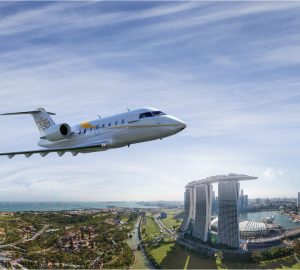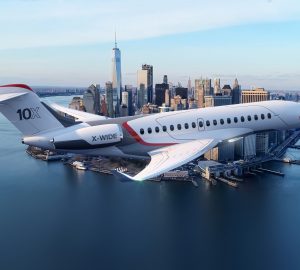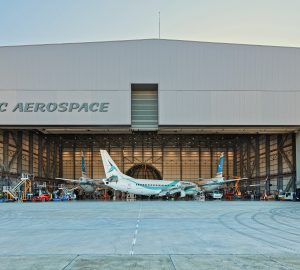Dassault Sees a Market Headed Eastward
Aviation executives follow the global economy as it tilts on its axis towards the east.
Some readers may be familiar with the global economic center of gravity map. It was first created by the McKinsey consulting firm to educate clients on which way the economic winds were blowing.
Just like the Coriolis force with which all pilots are familiar, it has been blowing from West to East. In the 1980s, the center of gravity was somewhere around the Azores in the mid-Atlantic.
Not surprisingly at that time, major businesses focused much of their sales and investment on either side of the Atlantic. Dassault was a case in point. Its planes of the era were designed with trans-Atlantic range in mind.

In 1977, Olivier Dassault, grandson of founder Marcel Dassault, was hailed in business aviation circles for his record setting flight in the new trijet Falcon 50 from Paris to New York. It should be noted that the original Falcon 50 had just the range capability for this 3,200 nm flight.
Neither Marcel nor his son Serge, who headed the company at the time, were contemplating long-range jets with double that range—enough to connect Paris to the major business centers of Asia. Or if they were, had no immediate plans to build them.
A half century ago, Dassault based its major MRO resources on the U.S. East Coast and in Paris as well as Geneva, where TAG Aviation was a Dassault specialist.
When China was first opening to business aviation in subsequent decades, it was common to fly a Falcon halfway around the world to Paris for a major inspection interval.
But for those paying attention to the eastward shift of global GDP–and Dassault was paying attention–business has headed east. By 2008, the center of gravity had shifted to the vicinity of Bucharest, not itself a major business hub, but it gives you a sense of the direction.

Then something astonishing happened: the global economy tilted on its axis. America and Europe entered deep recessions. The economies of Asia boomed. Both China and India in their own unique ways became dynamic engines of industry, pulling other Asian economies in their wakes.
American and European aviation executives were stunned by the almost instantaneously depressed western markets. The leaders of these companies were often in the air to Singapore, Hong Kong, Beijing, Shanghai and many other destinations around the Pacific Rim. Sales there boomed. And it did not hurt that new long-range aircraft were arriving on the market to serve these long routes.
In 2007, Dassault certified the Falcon 7X, the first fly-by-wire business jet with 5,700 nm range. It proved popular in Asia, as did the Falcon 2000LX certified in 2009 with 4,000 nm range.
In the decade that followed, Falcons were supported in Asia by authorized facilities well equipped for line maintenance and even for AOG support. But for major repairs, upgrades or inspections, a customer might schedule these to coincide with a trip to Europe or America.
As the Dassault fleet passed 2,000 aircraft, as it launched new long-range and ultra-long range models (the 6X and 10X respectively), and as flight activity globalized, the company considered a bold move. The idea was to globalize the factory service network and to set one uniformly high standard for service.
The first step was to quickly expand the network. In 2019, Dassault acquired not one, but three esteemed independent maintenance providers: the TAG Aviation MRO network, mostly in Europe (and since rebranded as Dassault Aviation Business Services); the business jet MRO facilities of Swiss-based RUAG, which was folded into DABS; and the entire service network of ExecuJet Aviation, with facilities stretching from London to Auckland.
Dassault’s Asia Pacific Strategy is Built on Ground Support
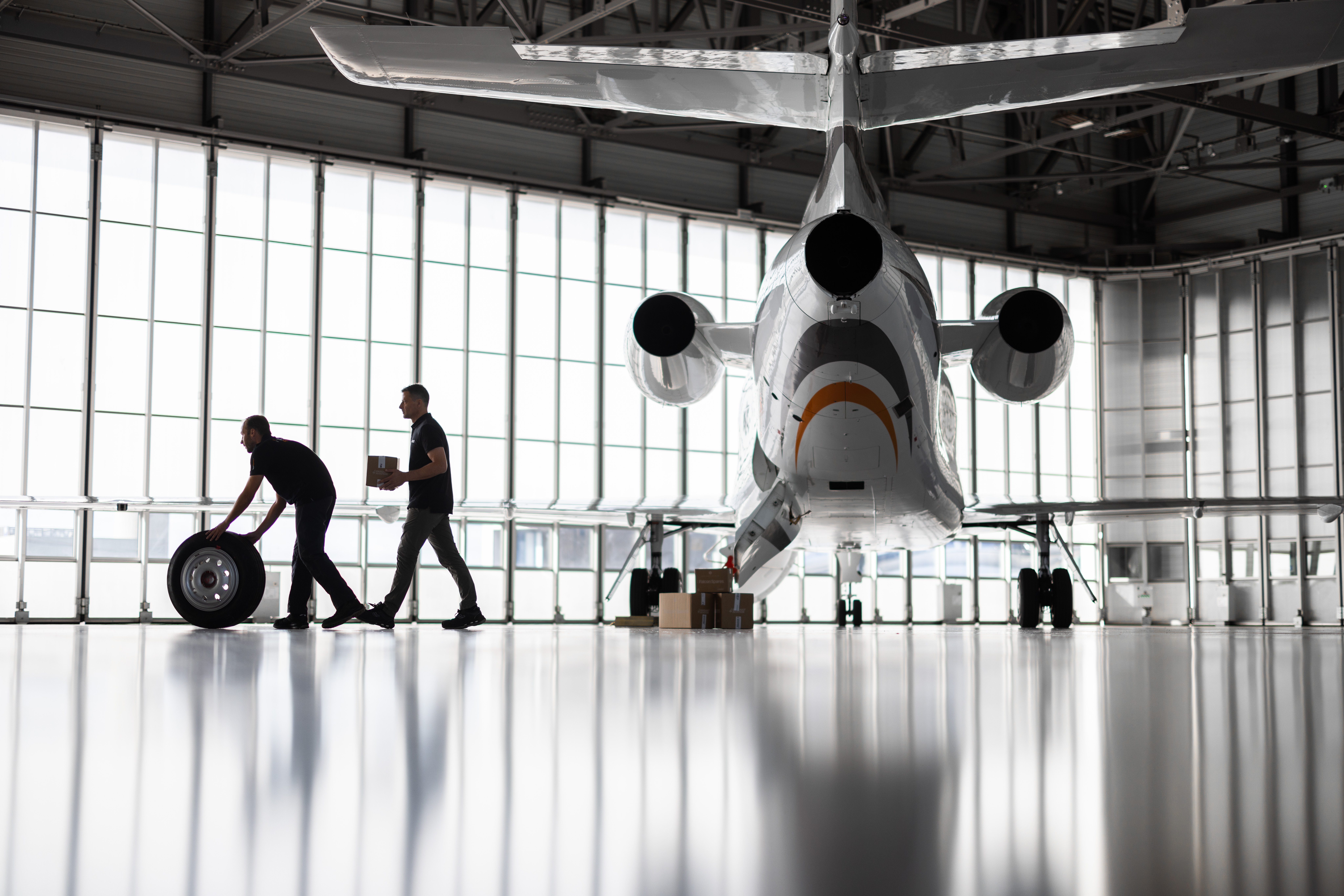
It may come as a surprise that one of Asia’s top maintenance networks launched its first service center in Lanseria, South Africa. But that is the story of ExecuJet MRO Services which supports not just the Falcon line but other leading business jet brands, as well.
Founded in 1991 by an entrepreneurial team, ExecuJet next opened an MRO base in faraway Brussels and kept on growing. Australia was an early focus. Today, the firm, with 13 locations, is heavily oriented to the Middle East and Asia. When acquired by Dassault in 2019, one of ExecuJet’s founders, Graeme Duckworth, who ran maintenance from the beginning, became president.
ExecuJet MRO Services has major new facilities in Dubai and Kuala Lumpur (it’s hub for Asia Pacific), as well as Melbourne, Sydney, Perth, Wellington and Auckland. As part of a joint venture, it has opened a new facility, ExecuJet Haite, at Beijing Daxing International Airport.
ExecuJet Haite supplies one example of how invaluable this service network can be. When a Falcon 8X was grounded with a landing gear issue at Beijing Capital International Airport, the service center (then in nearby Tianjin) loaded thousand-pound jacks, a test bench, and other necessary equipment into a truck and was on site within hours to effect repairs. The charter jet departed the next morning with a happy customer. Indeed, the charter company was also a happy customer.
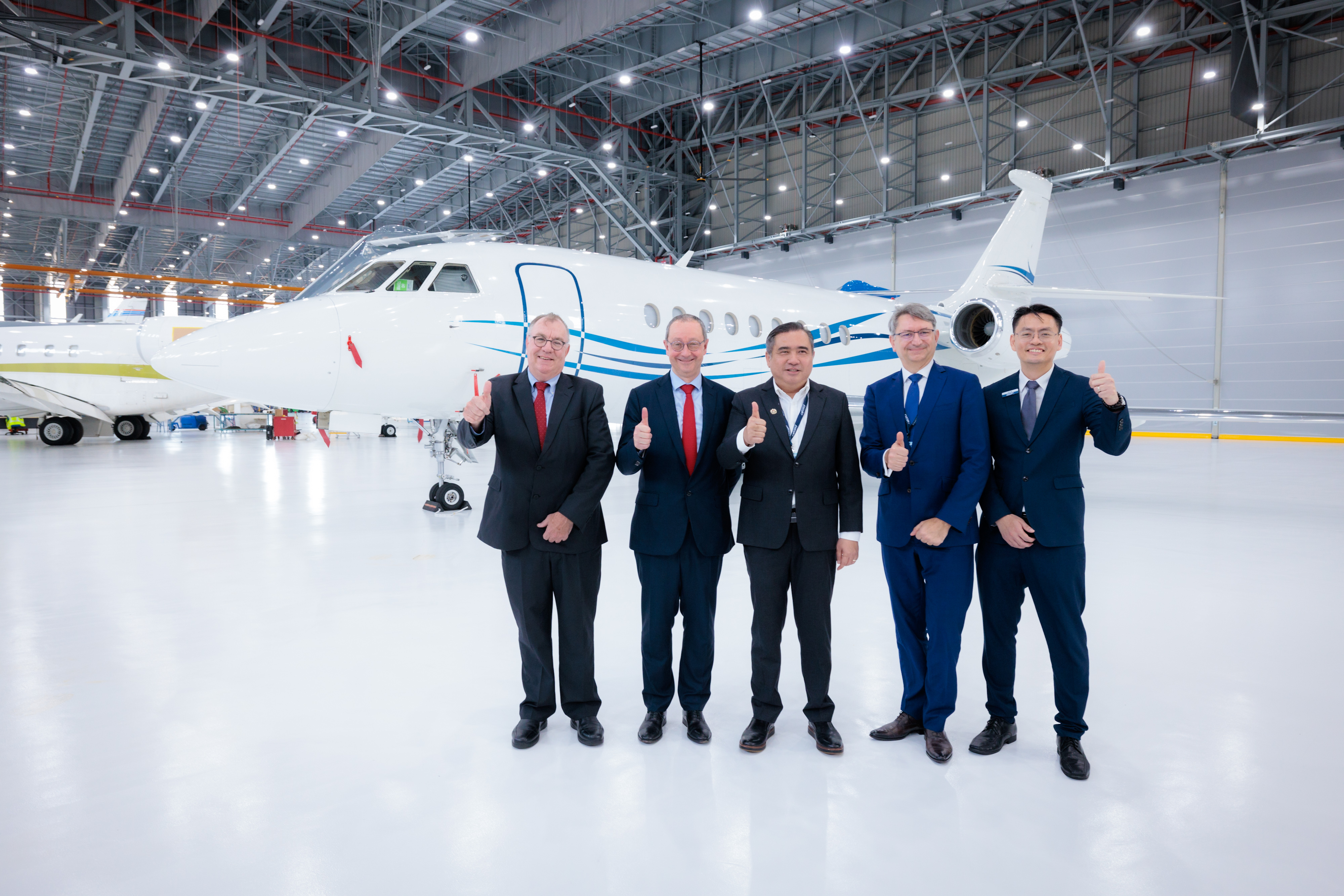
ExecuJet MRO is a major part of Dassault’s global support network, which now numbers 40 factory service centers, another 20 authorized facilities, and 15 parts distribution hubs. From these locations, field service technicians fan out to stay close to customers and leap into action when needed.
This is more than mere wrench turning. Field reps are also Dassault ambassadors, helping smooth the entry into new markets and make sure new and existing customers have a positive service experience. Dassault field reps were recently rated best in the industry in a survey by Aviation International News. As Vietnam was opening to business aviation, Dassault sent two experienced technicians from KL to live and work day-to-day with new customers in Hanoi and Ho Chi Minh City. That bond with customers is priceless.
Transitioning to a true factory service center, however, does not happen overnight. A factory MRO must be ready for heavy maintenance and major inspections such as C-checks, as well as various upgrades for cabin and flight deck.
Dassault has worked over the past half decade to thoroughly integrate its global network. When new Asian service centers conducted their first major Falcon periodic inspections, teams from the factory in Bordeaux-Mérignac and from long-established service centers in Paris and Geneva flew in to coach the new teams.

All service locations are connected by a 24/7 command center in Bordeaux-Mérignac to coordinate AOG service and other less time sensitive work. The parts supply network is globally linked for constant real time updating of inventories in every location.
Meanwhile, Dassault has prepared the global network for new aircraft, the 5,500 nm Falcon 6X, now in service, and the new 7,500 nm 10X with service entry targeted for 2027. Both establish new standards for size and comfort. The newest regional maintenance hubs in Dubai and KL have been sized specifically for these aircraft.
Maintenance support may be less glamorous than the fighter-inspired flight controls of these new planes, or their sumptuous cabins. But a strong maintenance organization keeps them flying and builds customer loyalty.
The Dassault fleet is constantly renewed
Falcon 6X
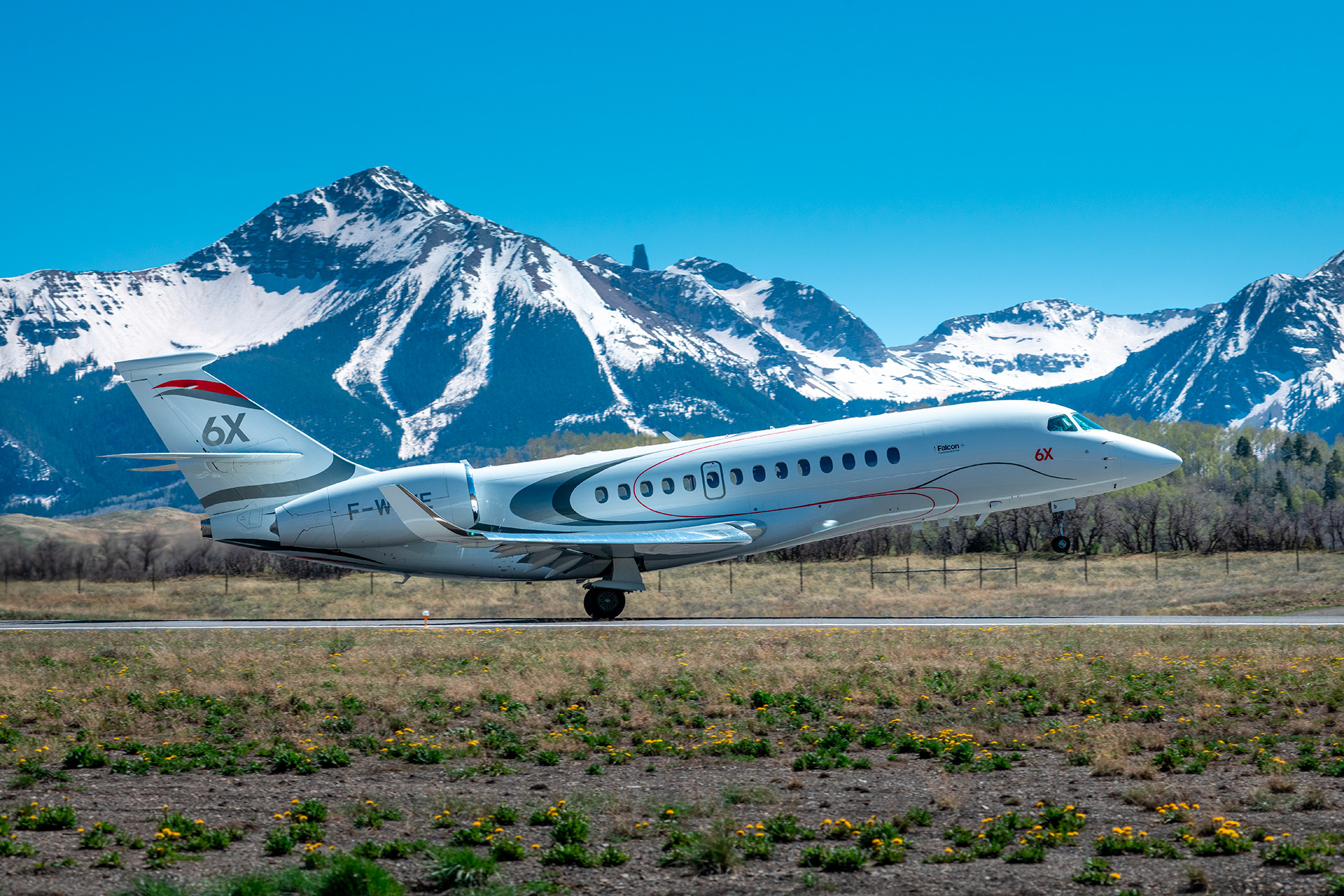
This latest Falcon entered service in late 2023 and has been heavily demonstrated to customers across the Asia Pacific Region. Range is a bit less than the Falcon 8X at 5,500 nm, but more than sufficient to connect Beijing or Hong Kong to Paris. In recent years, competition among the major business jet companies has been defined by “cabin wars.” With its latest aircraft, Dassault decided to make its mark with the largest, most comfortable, most productive cabin in business aviation. The 6X cabin has the largest cabin cross section of any purpose-built business jet—six feet, six inches tall and eight feet, six inches wide—wider than some regional jets.

It has the most advanced fly-by-wire system in any Falcon and pilots have uniformly praised its precise maneuvering and “kiss” landings—which tend to make pilots look good for the boss in the back. Dassault reports it also has the quietest cabin yet, quiter than the Falcon 8X, previously reputed to be the quietest business jet with a 48 dB average—about what you would experience in your own living room, if the kids aren’t playing video games, at least.
Falcon 10X
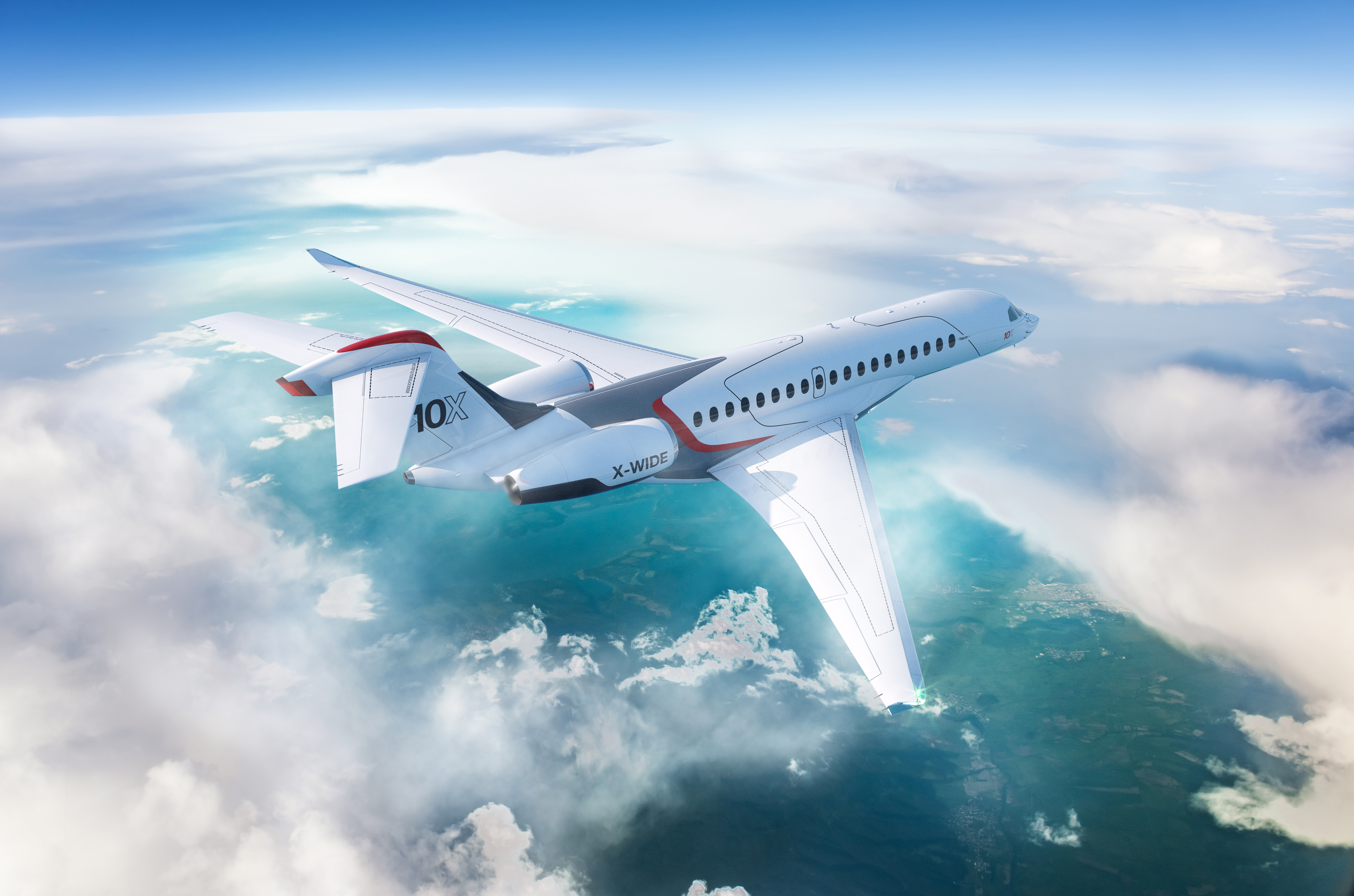
Which brings us finally to the Mach 0.92 Falcon 10X, which may be the ultimate purpose-built business jet with a cabin that eclipses all others. Cabin height is six feet, eight inches. Width is nine feet, one inch. Cabin dividers are movable so cabin areas can be shortened or lengthened to create staterooms, small multimedia salons, or larger dining spaces—pretty much whatever the owner wants. It becomes in effect a custom-designed flying penthouse, a very desirable notion when flight times can exceed 15 hours.
The 10X will again advance the technological envelope with new features including the NeXus flight deck, simplifying tasks and allowing pilots to fly for the first time by head-up-display as the sole means of reference—keeping eyes out and enhancing safety. It has a single lever-SmartThrottle, reducing engine management tasks and making possible an automatic recovery mode at the touch of a button.

All of these features have evolved from the latest in Dassault fighter technology, something only Dassault is able to offer as it is the only company building business jets and fighters.
For operators in the Asia Pacific region the Dassault philosophy boils down to providing the latest technology, a range of efficient aircraft and nearby choices for product support.
With the center of the global economy moving inexorable eastward, the company is persuaded this is the only way to go.




